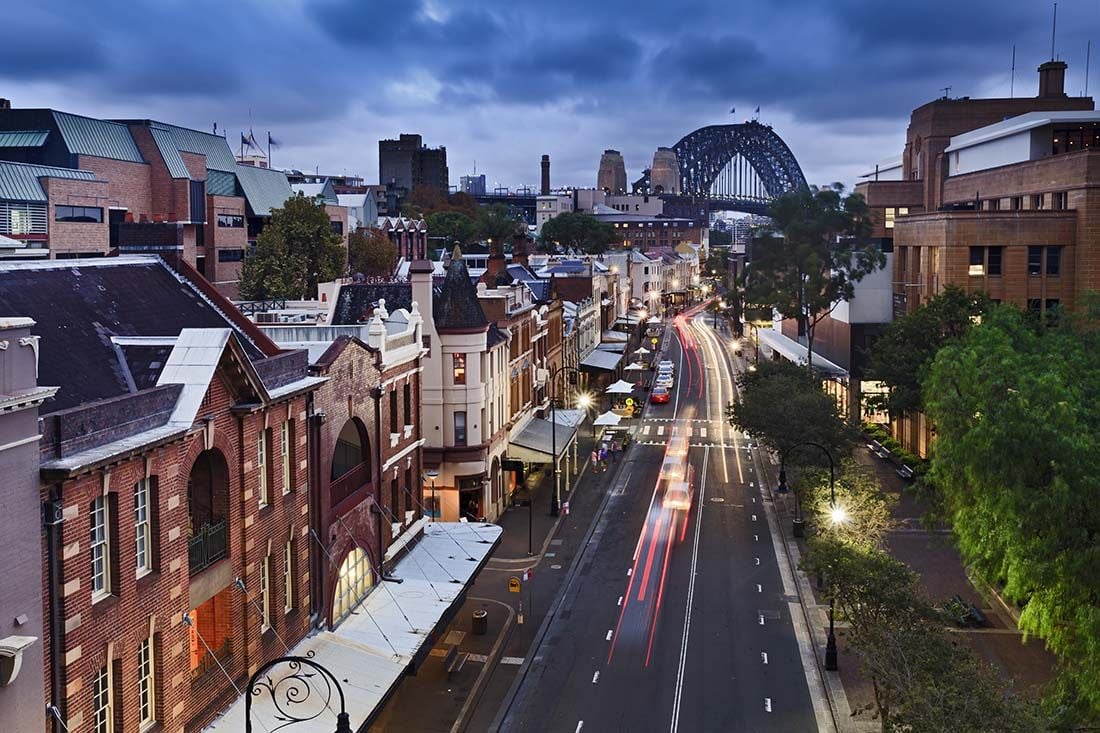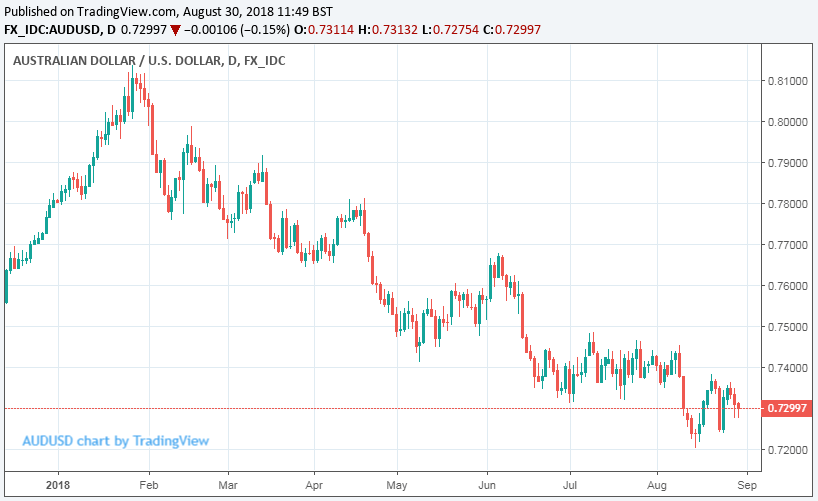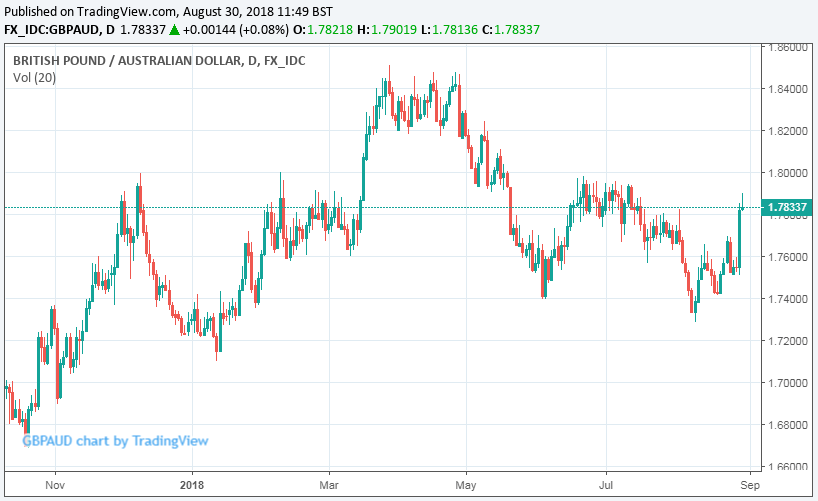The Australian Dollar's Outlook Sours Further as Capex, House Price Data Point to RBA Inertia
- Written by: James Skinner
-
- Australian capital expenditure slumps -2.5%, building approvals -5.2%.
- Capex decline comes amid challenging global market environment.
- Approvals slide as borrowing costs rise, housing market wobbles.

© Taras Vyshnya, Adobe Stock
The Australian Dollar hit the ropes Thursday after official data showed the value of business investment falling sharply during the second-quarter, while the housing market wobbled in July.
Both sets of data suggest the Aussie economy will require the Reserve Bank of Australia to keep interest rates on hold for longer, a situation that could well undermine the country's currency for the forseeable future.
According to the Australian Bureau of Statistics capital expenditures fell by -2.5% to $29.09 bn during the three months to the end of June, more than reversing the 1.2% gain seen back in the first quarter, as business investment across all categories declined
"Today’s capex numbers were on the softer side for Q2 18. Some of this was driven by upward revisions to Q1 data. The forward estimates were better than expectations and imply non-mining investment to remain at elevated levels over the next year," says Belinda Allen, a senior economist at Commonwealth Bank of Australia.
Spending on new buildings and structures declined -3.9% to $15.4 bn during the period while investment in equipment, plant and machinery dropped by -0.9% to $13.7 bn.
However, and on a more positive note, expected capital expenditure for the 2018/19 year was reported at $102 bn. This is more than 17% higher than the figure indicated earlier in the year and was ahead of market expectations.
"Today’s capex numbers were on the softer side for Q2 18. Some of this was driven by upward revisions to Q1 data. The forward estimates were better than expectations and imply non-mining investment to remain at elevated levels over the next year," Allen adds.
Allen and the CBA team say Thursday's data has "no immediate implication" for the second quarter GDP growth number due for release on Wednesday 05, September.
However, Daniel Gradwell, an economist with ANZ Research says the outlook for 2018-19 is a bit softer than anticipated; "for the second quarter in a row, firms have downgraded their implied spending for the new financial year. It is still early days, but a continuation of this trend would be concerning."
Separately, the Australian Bureau of Statistics also said the number of new building approvals fell by -5.2% during July, a much steeper decline than the -2.2% consensus forecast had suggested was likely.
"With the Sydney and Melbourne housing markets swinging into price corrections and financing conditions tightening for both home buyers and developers, we may also start to see projects proceed more slowly or be shelved altogether," warns Matthew Hassan, a senior economist at Westpac.
Details of the July slump follow closely behind a decision by Westpac, which is one of Australia's top four lenders, to raise its variable mortgage rates by 15 basis points from 19 September in a move that will serve only to slow housing activity further.
Westpac says the decision is necessary because of a steep 25 basis point increase in global wholesale funding costs this year, which comes amid an ongoing push by the US Federal Reserve to raise its interest rate toward "neutral" territory or above.

Above: AUD/USD rate shown at daily intervals.
The AUD/USD rate was quoted 0.24% lower at 0.7292 Thursday while the Pound-to-Australian-Dollar rate was up 0.04% at 1.7836.
The Aussie was also quoted lower against all other G10 currencies Thursday except the New Zealand Dollar, which was hit by a steep decline in Kiwi business confidence to a new post-crisis low.

Above: Pound-to-Australian-Dollar rate shown at daily intervals.
Thursday's data comes at a testing time for the Australian Dollar, which has declined by 6.5% against the US greenback and 3.6% against the Pound this year.
Australia's currency has been weighed down by the twin forces of an evolving global interest rate environment and a deteriorating outlook for so-called risk assets.
Financial assets with direct exposure to the Chinese economy, commodity prices and international trade have lost ground in 2018 as traders have sought to avoid being caught on the wrong side of the "trade war" between the US and China.
Australia's Dollar has exposure to all three of those things, with China being the Antipodean nation's largest trade partner, while commodities and international trade are the economy's bread and butter.
Moreover, the outlook for domestic interest rates has darkened due to an absence of inflation and wage pressures down under.
This saw financial markets shift from betting the RBA would likely raise its interest rate up from a record low of 1.5% before year-end, to speculating that Australian interest rates will remain at their record lows until the dying days of 2019.
Changes in interest rates, or hints of them being in the cards, are normally only made in response to movements in inflation but impact currencies significantly because of the push and pull influence they have over international capital flows and their allure for short-term speculators.
Australian inflation has remained below the lower bound of the 2% to 3% target for much of the time since 2012 and has surprised on the downside persistently in 2018. Some analysts say this is because of weak upward pressure on wages in the domestic economy.
Advertisement
Get up to 5% more foreign exchange by using a specialist provider to get closer to the real market rate and avoid the gaping spreads charged by your bank when providing currency. Learn more here




